Q4:
AS & A Level Chemistry - 9701 Paper 2 2021 Spring Zone 2
Questions:
4/4

Topic: CH3 - CHEMICAL BONDING
Solution



PRACTISE
Similar Questions

LEARN
Concepts with Sparky

More Questions from this Topic
Theory
CH3 - CHEMICAL BONDING
(a) (i) Explain the lack of reactivity of nitrogen gas, $N_2(g)$.........................................................................................
2024
 Summer
Summer
 Summer
Summer
 4
4
Theory
CH3 - CHEMICAL BONDING
Bismuth is an element in Group 15 of the Periodic Table.(a) Bismuth has metallic bonding.Draw a labelled diagram to show the metallic bonding in bismu...
2024
 Spring
Spring
 Spring
Spring
 4
4
Theory
CH3 - CHEMICAL BONDING
Chlorine, $Cl_{2}$, reacts with many elements and compounds to form chlorides.Table 2.1 shows information about some chlorides of Period 3 elements.Ta...
2024
 Spring
Spring
 Spring
Spring
 5
5
Theory
CH3 - CHEMICAL BONDING
(a) Table 3.1 shows some properties of two Group 14 elements, C and Sn, in their standard states. The table is incomplete.\begin{table}
\centering
\b...
2024
 Winter
Winter
 Winter
Winter
 4
4
Theory
CH3 - CHEMICAL BONDING
Nitrogen, $N_2$, is generally an unreactive molecule but it does react under certain conditions. (a) Give two reasons to explain the lack of reactivi...
2024
 Spring
Spring
 Spring
Spring
 4
4
Theory
CH3 - CHEMICAL BONDING
(a) Sulfur chloride, $\text{SCl}_2$, is a liquid at room temperature. When $\text{SCl}_2$ is added to water, misty fumes are seen and a solution is ma...
2024
 Summer
Summer
 Summer
Summer
 4
4
Theory
CH3 - CHEMICAL BONDING
Hydrocarbon molecules contain covalent bonds.(a) Define covalent bond....................................................................................
2024
 Summer
Summer
 Summer
Summer
 2
2
Theory
CH3 - CHEMICAL BONDING
Benzene reacts with chlorine gas to form chlorobenzene. This reaction can be described as the reaction between benzene molecules and $Cl^+$ ions. The ...
2024
 Winter
Winter
 Winter
Winter
 2
2
Theory
CH3 - CHEMICAL BONDING
The Pauling electronegativity values of elements can be used to predict the chemical properties of compounds.Use the information in Table 1.1 to answe...
2023
 Spring
Spring
 Spring
Spring
 2
2
Theory
CH3 - CHEMICAL BONDING
The elements silicon, phosphorus and sulfur are in Period 3 of the Periodic Table.(a) (i) Describe the variation in atomic radius from silicon to sulf...
2023
 Winter
Winter
 Winter
Winter
 3
3
More Questions from year 2021
Theory
CH4 - STATES OF MATTER
The rate of chemical reactions is affected by changes in temperature and pressure.(a) (i) Draw a curve on the axes to show the Boltzmann distribution ...
2021
 Spring
Spring
 Spring
Spring
 1
1
Theory
CH11 - GROUP 17
Chlorine, $Cl_2$, is a reactive yellow-green gas. It is a strong oxidising agent.(a) State how $Cl_2$ is used in water purification......................
2021
 Spring
Spring
 Spring
Spring
 4
4
Theory
CH5 - CHEMICAL ENERGETICS
Compounds P, Q and R have all been found in the atmosphere of one of Saturn’s moons.
P: N≡C—C≡C—C≡C—N
Q: H—C≡C—C≡N
R:  Spring
Spring
 Spring
Spring
 3
3
Theory
CH3 - CHEMICAL BONDING
Hydroxyethanal, HOCH$_2$CHO, has been observed in dust clouds near the centre of our galaxy.hydroxyethanal(a) Predict the bond angles labelled x and y...
2021
 Spring
Spring
 Spring
Spring
 2
2
Theory
CH12 - AN INTRODUCTION TO THE CHEMISTRY OF TRANSITION ELEMENTS
(a) The most common oxidation states of cobalt are +2 and +3.Complete the electronic configurations of the following free ions.• Co2+ [Ar] .........
2021
 Spring
Spring
 Spring
Spring
 1
1
Theory
CH6 - ELECTROCHEMISTRY
(a) Iron(II) compounds are generally only stable in neutral, non-oxidising conditions.It is difficult to determine the lattice energy of FeO experimen...
2021
 Spring
Spring
 Spring
Spring
 2
2
Theory
CH3 - CHEMICAL BONDING
Iodates are compounds that contain the $\text{IO}_3^{-}$ anion.(a) The $\text{IO}_3^{-}$ anion is shown.Explain, with reference to the qualitative mod...
2021
 Spring
Spring
 Spring
Spring
 3
3
Theory
CH12 - AN INTRODUCTION TO THE CHEMISTRY OF TRANSITION ELEMENTS
The transition elements are able to form stable complexes with a wide range of molecules and ions.(a) State the meaning of transition element............
2021
 Spring
Spring
 Spring
Spring
 2
2
Theory
CH12 - AN INTRODUCTION TO THE CHEMISTRY OF TRANSITION ELEMENTS
(a) Carboplatin and satraplatin are used as anticancer drugs instead of cisplatin. (i) Describe the action of cisplatin as an anticancer drug. ........
2021
 Spring
Spring
 Spring
Spring
 2
2
Theory
CH19 - CARBOXYLIC ACIDS AND DERIVATIVES
Fumaric acid is a naturally occurring dicarboxylic acid.\\[ \text{fumuric acid} \] \[ \text{HO}_2\text{C}=\text{CH}-\text{CH}=\text{CO}_2\text{H} \](a...
2021
 Spring
Spring
 Spring
Spring
 2
2




 Share
Share




 Previous
Previous



